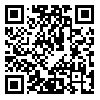Articles accepted at the time of publication
Back to the articles list |
Back to browse issues page
1- Department of Arabic, Faculty of Foreign Languages, University of Isfahan, Isfahan, Iran
2- Associate Professor, Department of Arabic, Faculty of Foreign Languages, University of Isfahan, Isfahan, Iran ,aslani@fgn.ui.ac.ir
3- Department of Persian Language and Literature, Faculty of Literature and Humanities, University of Isfahan, Isfahan, Iran
2- Associate Professor, Department of Arabic, Faculty of Foreign Languages, University of Isfahan, Isfahan, Iran ,
3- Department of Persian Language and Literature, Faculty of Literature and Humanities, University of Isfahan, Isfahan, Iran
Abstract: (140 Views)
This study employs a semiotic approach to analyze Asaad Rustam's satirical poem "Duyuk wa Duyuk", utilizing Yuri Lotman's theoretical framework. The significance of this research can be explained on three levels: 1. Practical: It applies cultural semiotics to the interpretation of Arabic literary satire; 2. Methodological: It proposes a tripartite model (opposition, explosion, intertextuality) for analyzing political satirical texts; 3. Social: It examines literary resistance strategies within Syria’s authoritarian context. The findings of this descriptive-analytical study reveal that Rustam transforms satire into a tool for deconstructing dominant discourses. At the first level, the poet challenges social structures by constructing binary oppositions such as tradition/modernity and appearance/reality (e.g., superficial peace vs. underlying resentment). At the second level, he subverts audience expectations through semiotic explosions (e.g., the satirical triad "Fāaflasa! Fāḥtajabat! Fāḥtajab!"). At the third level, he engages in a critical rereading of culture via intertextuality with folk literature (e.g., using the rooster as a leitmotif). The study demonstrates that Rustam’s satire functions as a form of semiotic resistance—simultaneously reflecting and transforming Arabic culture. It provides a model for analyzing satirical texts within cultural semiotics, applicable to the literature of other authoritarian societies.
Article Type: مقالات علمی پژوهشی |
Subject:
Semiotics
Send email to the article author
| Rights and permissions | |
 |
This work is licensed under a Creative Commons Attribution-NonCommercial 4.0 International License. |






